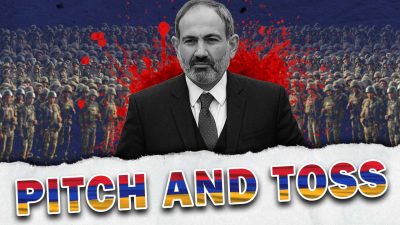Video: Armenian-Azerbaijani War – One Month After

After a month of war, the Turkish-Azerbaijani bloc continues to keep the initiative in the conflict, exploiting its advantage in air power, artillery, military equipment and manpower. The coming days are likely to show whether Ankara and Baku are able to deliver a devastating blow to Armenian forces in Karabakh in the nearest future or not. If Armenian forces repel the attack on Lachin, a vital supply route from Armenia to Nagorno-Karabakh, they will win the opportunity to survive till the moment when the ‘international community’ finally takes some real steps to pressure Turkey and Azerbaijan enough to force them to stop the ongoing advance. If this does not happen, the outcome of the war seems to be predetermined.
Meanwhile, Azerbaijani forces continue their advance in the region amid the failed US-sponsored ceasefire regime. Their main goal is Lachin. In fact, they have been already shelling the supply route with rocket launchers and artillery. The distance of 12-14km at which they were located a few days ago already allowed this. Now, reports appear that various Azerbaijani units are at a distance of about 5-8 km from the corridor. Armenian forces are trying to push Azerbaijani troops back, but with little success so far.
The advance is accompanied by numerous Azerbaijan claims that Armenian forces are regularly shelling civilian targets and that the ongoing advance is the way to deter them. Baku reported on the evening of October 27 that at least four civilians had been killed and 10 wounded in Armenian strikes on Goranboy, Tartar and Barda. On the morning of October 28, the Armenians allegedly shelled civilian targets in Tovuz, Gadabay, Dashkesan, and Gubadl.
On the morning of October 28, the Azerbaijani Defense Ministry claimed that in response to these Armenian violations its forces had eliminated a large number of enemy forces, an “OSA” air-defense system, 3 BM-21 «Grad» rocket launchers, 6 D-30, 5 D-20, and 1 D-44 howitzers, 2 2A36 «Giatsint-B» artillery guns, a 120 mm mortar, a “Konkurs” anti-tank missile and 6 auto vehicles.
On October 27, Azerbaijani sources also released a video allegedly showing the assassination of Lieutenant General Jalal Harutyunyan by a drone strike. Azerbaijani sources claim that he was killed. These reports were denied by the Armenian side, which insisted that the prominent commander was only injured. Nonetheless, the Karabakh leadership appointed Mikael Arzumanyan as the new defense minister of the self-proclaimed republic.
On the evening of October 27 , the Armenian Defense Ministry released a map showing their version of the situation in the contested region. Even according to this map, Armenian forces have lost almost the entire south of Nagorno-Karabakh and Azerbaijani forces are close to the Lachin corridor. An interesting fact is that the Armenians still claim that the town of Hadrut is in their hands. According to them, small ‘enemy units’ reach the town, take photos and then run away.
Al-Hadath TV also released a video showing Turkish-backed Syrian militants captured during the clashes. Now, there is not only visual evidence confirming the presence of members of Turkish-backed militant groups in the conflict zone, but also actual Syrian militants in the hands of Armenian forces.
Experts who monitor the internal political situation in Armenia say that in recent days the Soros-grown team of Pashinyan has changed its rhetoric towards a pro-Russian agenda. Many prominent members of the current Pashinyan government and the Prime Minister himself spent the last 10 years pushing a pro-Western agenda. After seizing power as a result of the coup in 2018, they then put much effort into damaging relations with Russia and turned Armenia into a de-facto anti-Russian state. This undermined Armenian regional security and created the conditions needed for an Azerbaijani-Turkish advance in Karabakh. Now, the Pashinyan government tries to rescue itself by employing some ‘pro-Russian rhetoric’. It even reportedly asked second President of Armenia Robert Kocharyan to participate in negotiations with Russia as a member of the Armenian delegation. It should be noted that the persecution of Kocharyan that led to his arrest in June 2019 was among the first steps taken by Pashinyan after he seized power. Kocharyan was only released from prison in late June 2020. Despite these moves in the face of a full military defeat in Karabakh, the core ideology of the Pashinyan government remains the same (anti-Russian, pro-Western and NATO-oriented). Therefore, even if Moscow rescues Armenia in Karabkah, the current Armenian leadership will continue supporting the same anti-Russian policy.
*
Note to readers: please click the share buttons above or below. Forward this article to your email lists. Crosspost on your blog site, internet forums. etc.
SUPPORT SOUTHFRONT:
PayPal: [email protected], http://southfront.org/donate/ or via: https://www.patreon.com/southfront

